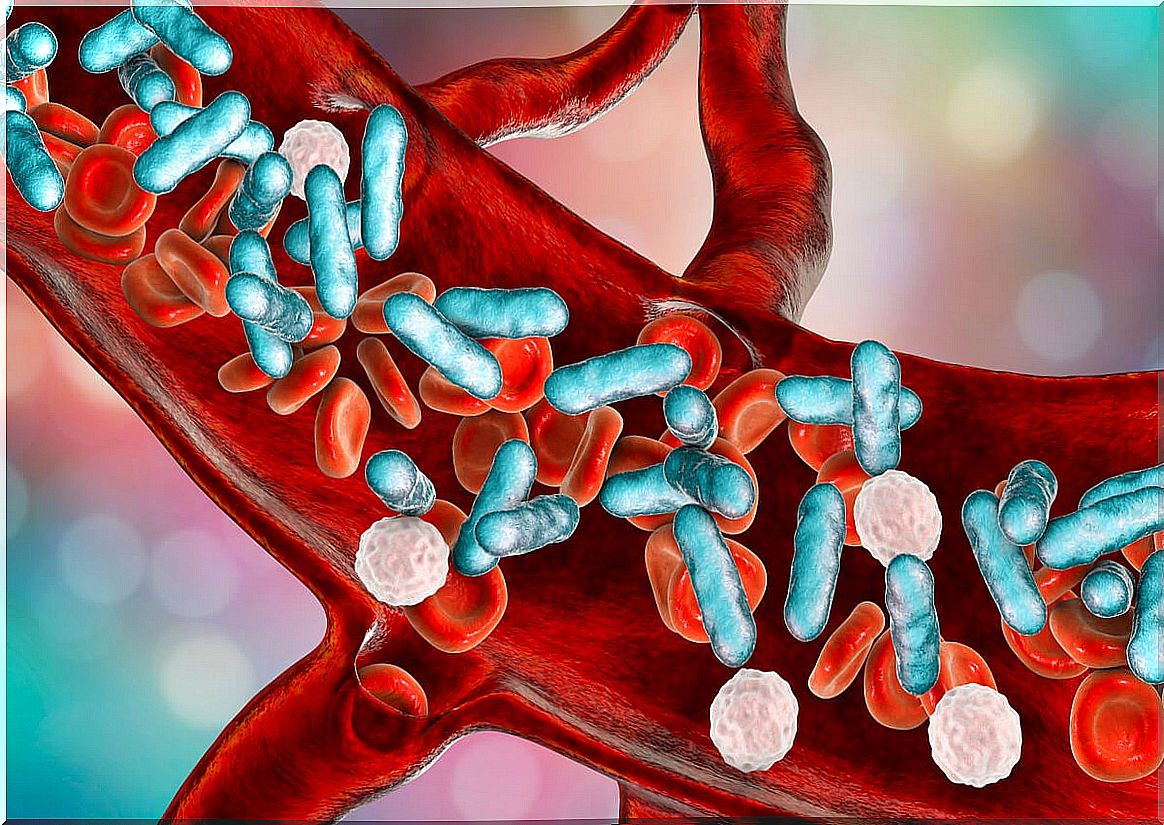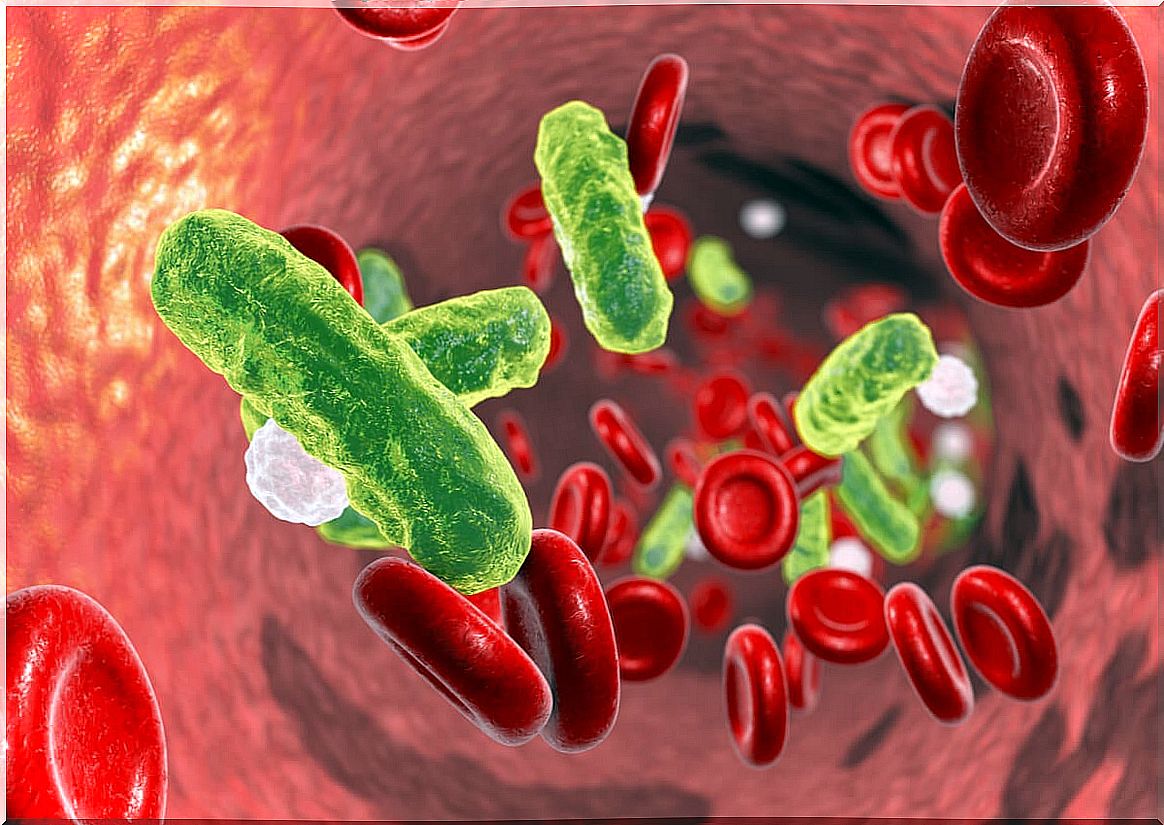What Is Sepsis Or Septicemia?
Sepsis or septicemia is a process that includes symptoms such as fever, chills, aches and pains, and high heart rate, among others. According to the Centers for Disease Control and Prevention (CDC), this pathology occurs 80% of the time outside of hospital environments and 7 out of 10 patients who suffer from it have previous illnesses.
This is why it is essential, especially among healthcare personnel, to identify this clinical complication before it causes the death of the patient. Do you know the symptoms and risk factors? In this space we tell you everything you need to know about this dangerous disease.
About septicemia and its frequency
To understand its severity, this pathology must be framed in a global framework, before knowing its operation and clinical picture. Although the name may seem strange to us, its frequency is higher than we can imagine at first.
To put things in perspective, it is important to make known that various studies have placed sepsis or septicemia as the tenth leading cause of death in humans worldwide. In the United States, for example, more than 700,000 cases are registered annually, of which 215,000 end in the death of the patient.
We go further, since other bibliographic sources estimate that it causes around 30 to 50 deaths per 100,000 inhabitants. Although it can affect people of all ages, there are some who are more likely to suffer from it. The risk groups most likely to suffer from sepsis or septicemia are the following:
- People 65 years of age or older.
- Newborns and babies less than one year old.
- People with a weakened immune system.
- Patients with chronic diseases, such as diabetes.
As we can suppose, we are facing a pathology with high morbidity (degree of health that a person loses when suffering it) and mortality. But how does septicemia occur? We will explain it to you below.

What is sepsis or septicemia?
Septicemia is defined as a medical emergency as a result of an excessive immune response of the patient to an infectious process, which can lead to organ failure and even death. That is to say, at the point of an infection, the body overreacts to defend itself and that defense ends in the attack on the organs themselves.
This term has gone through several meanings in his medical history. Since 2017 it has been almost unanimously accepted that it is ” organic dysfunction caused by an abnormal host response to infection that poses a threat to survival.”
According to a microbiological study from the US National Library of Medicine (PMC), the process of septicemia begins with an infection anywhere in the body. As the bacteria that cause it multiply in the focus, antigens (elements of the host’s immune system) promote inflammatory responses.
The answer occurs in order to isolate pathogens and prevent their proliferation. However, the excessive way of responding can generate changes that unbalance and endanger the patient’s organs.
Symptoms
Symptoms of sepsis or septicemia are as follows:
- General: fever or hypothermia (more than 38.3 ° C or less than 36 ° C), an increase in the heart rate to more than 90 per minute (being the normal around 70), altered mental state and edema (accumulations liquid).
- Inflammatory variables: leukocytosis, or what is the same, an increase in white blood cells in the bloodstream. Leukopenia can also occur, which is just the reverse process.
- Organ dysfunction: arterial hypoxemia (lack of oxygen in the blood), blood clotting abnormalities or thrombocytopenia (a low blood platelet count).
Depending on the severity of the infectious process, we can find different symptoms or a combination of them. Without a doubt, septic shock is the worst of all situations.
In this case, sepsis causes a drop in blood pressure (hypotension) that does not respond to conventional treatments, causing problems in one or more vital organs. Transferring the patient to an intensive care unit is essential for their survival.
Diagnosis and treatment

According to various studies, the diagnosis is generally based on the detection of the symptoms previously described, since they are the most immediate signs that something is going wrong in the patient’s body. In ideal cases, cultures of samples from the patient should be performed to identify the bacteria causing the infection, but sometimes there is no time for this.
The best option is, without a doubt, to apply broad-spectrum antibiotics and hope for the best. Some of the studies cited above provide encouraging data, since the survival rate was 82.7% in cases in which the drugs were applied 30 minutes after the typical hypotension of septic shock was diagnosed.
Patients with sepsis also often require adjunctive treatments, such as insulin and intravenous fluids to regain a functional bloodstream. We must understand that almost all body systems are affected in severe sepsis situations.
What should be remembered about sepsis or septicemia?
As we have seen, septicemia responds to a clinical picture that is generated when an infection, anywhere in the body, becomes complicated. The more time passes, the more opportunities are given to bacteria to multiply and colonize new organs, so acting swiftly is key to patient survival.
If anyone begins to suffer any of these symptoms during an infectious process, they must go to the emergency room immediately. When faced with sepsis, every second counts.









